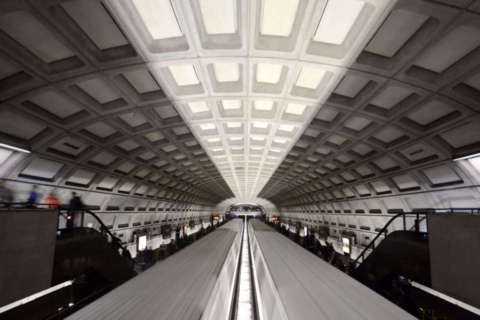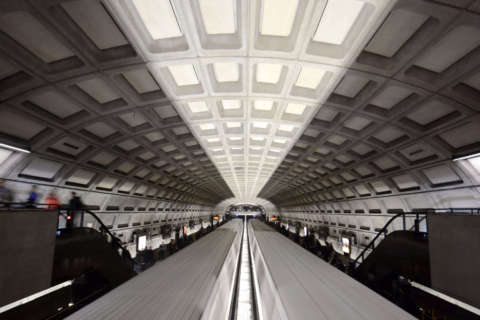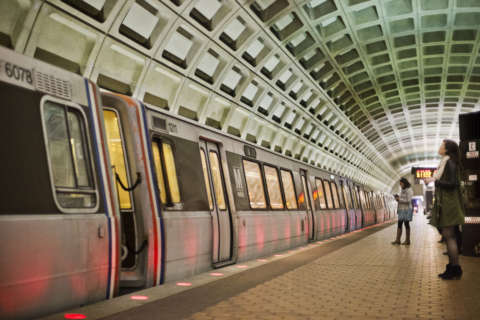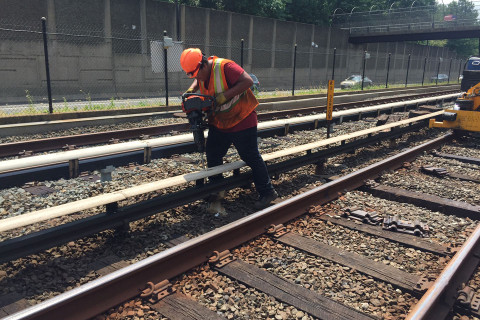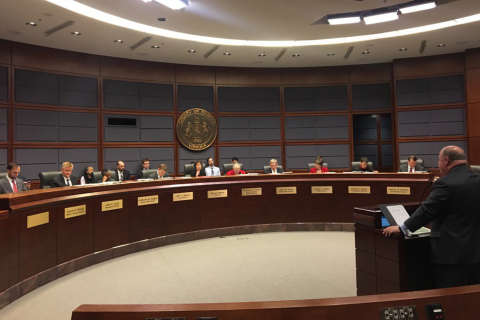WASHINGTON — As Metro General Manager Paul Wiedefeld prepares to release his grand plan to head off the threat of major fundamental financial and operational issues, an outside review of the agency is moving quickly to narrow down its own proposals.
The review, led by former U.S. Transportation Secretary Ray LaHood, is looking at Metro’s legal structure, board membership, labor costs and opportunities to cut costs, according to a presentation set to be given to Virginia’s Commonwealth Transportation Board next week.
Virginia’s General Assembly ordered the review, including a final report by Nov. 15. The presentation shows LaHood’s team plans to “consult officials in the region to look for a path forward,” in the hope that this will not be yet another study of Metro that ends up consigned to the pile of 41 years of similar recommendations for changes to the Metro Compact, bylaws or policies.
Metro Board Chairman and D.C. Councilmember Jack Evans said Wednesday that he has already met with LaHood to discuss potential changes to the board, management, costs and funding.
Evans supports the idea of getting additional money from the federal government, as well as a dedicated regional source of funding for Metro. The federal government’s special 10-year commitment of an additional $150 million in capital money expires next year.
Financial controls, questions
Metro has made significant progress on its internal financial controls to show that certain federal grant money is being used for proper purposes, but remains on what is known as restricted drawdown for a number of federal grants.
Washington-area business groups, including the Greater Washington Board of Trade and the Federal City Council, have taken a particular interest in financial or organizational changes at Metro lately, including recommending a federal control board or focusing on building trust to justify new dedicated regional funding.
Wiedefeld plans to reveal the details of his “specific, actionable and ambitious” proposals as early as next week. Those proposals could address Metro’s long-term capital funding needs for major infrastructure maintenance and, separately, what Wiedefeld calls “Metro’s unsustainable cost model.”
On Thursday, the Metro Board of Directors met in closed session to address budget and contract issues and Metro’s strategies for state and federal legislation, among other topics.
Metro needs billions of dollars for capital fixes and upgrades, and faces a growing operating gap between expenses and revenue as ridership drops but expenses slowly grow.
“The more difficult news is what happens in the future — next year and beyond, the amount that Metro’s going to need versus what the District and the region can actually afford,” Evans said Wednesday.
What lies ahead
The cuts to service hours starting this summer were sold as a way to allow more inspection and maintenance work.
While Metro is planning for ways to address its most serious safety issues, long-stalled plans to switch trains back into smoother automatic operations will remain on hold even longer.
“With everything that we have going on out there in the system, it’s important that we have manual control of the cars for now. We have a lot of people out there trying to catch up with the work that we need to do,” Wiedefeld said.
While the automatic train operation system can be adjusted to account for work crews, including by switching the train into manual mode in those areas, it would require that all procedures be carefully followed and that all track systems work correctly. Federal inspectors were nearly run over by a train last year, and Metro is now testing armbands that would serve as an additional warning that a train is approaching.
The automatic system was taken offline across the Metro system after the deadly 2009 Red Line crash, and only briefly restored for select trains on the Red Line in 2015. Metro has since spent years upgrading track circuits, as recommended by the National Transportation Safety Board, to be sure that controllers know for sure which stretch of track a train is on at any given time.
Those upgrades continue, but Wiedefeld said that a return to full automatic train operation is simply not as high a priority as other pressing safety problems, such as the worst crumbling tracks in the system that are getting some fixes in round-the-clock work zones.
“The other thing is that we do want to take a look at: The technology’s changed, and we want to make sure that [before] we go back to that it is the right technology. There is a whole ‘nother generation of technology there that other properties have used. So it isn’t that we’re not doing it; it’s that we want to analyze it and make sure when we do it, it’s safe, and it’s the right thing to do going forward,” Wiedefeld said.

